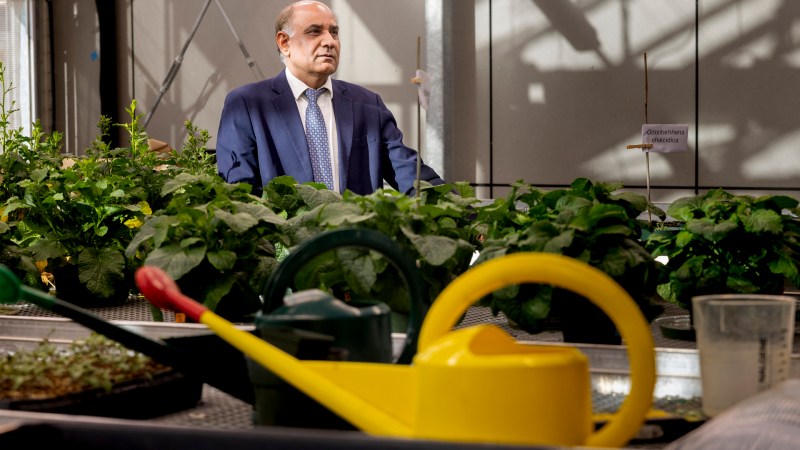Nickel contamination can render soils infertile at levels that are currently impractical to treat. Researchers at UMass Amherst are looking at how plants can help these soils and source nickel for the growing EV market.
Phytoremediation is the use of plants that preferentially hyperaccumulate certain contaminants to clean the soil. When those contaminants are also critical materials, you get phytomining. Starting with Camelina sativa, the researchers are looking to enhance its preference for nickel accumulation with genes from the even more adept hyperaccumulator Odontarrhena to have a quick-growing plant that can be a nickel feedstock as well as produce seeds containing oil for biofuels.
Despite being able to be up to 3% Ni by weight, Odontarrhena was ruled out as a candidate itself due to its slow-growing nature and that it is invasive to the United States. The researchers are also looking into what soil amendments can best help this super Camelina sativa best achieve its goals. It’s no panacea for expected nickel demand, but they do project that phytomining could provide 20-30% of our nickel needs for 50 years, at which point the land could be turned back over to other uses.
Recycling things already in technical cycles will be important to a circular economy, but being able to remove contaminants from the environment’s biological cycles and place them into a safer technical cycle instead of just burying them will be a big benefit as well. If you want learn about a more notorious heavy metal, checkout our piece on the blessings and destruction wrought by lead.
















Sounds too good. Trifids?
It sounds kind of like yet another case of science reverse-engineering traditional agricultural wisdom which was originally found through trial and error over thousands of years. Which is a good thing, it’s always good to verify and formalize things which we already know but we don’t know why we know them
It’s like real life Tiberium.
“but they do project that phytomining could provide 20-30% of our nickel needs for 50 years,”
That’s an easy projection to make, as the amount that can be regained depends on how much contaminated soil you have. And you can predict the amount of contaminated soil.
Moreover, you can control the amount of contaminated soil: by not doing anything to mitigate the contamination in the first place. Just stop protecting the environment, and your grandchildren could be billionaire phytominers!
Where do you think the nickel we gain from this is gonna go
Could this introduce high concentrations of nickel into new parts of the ecological food chain or does it stop inside those plants?
That’s the fun part of engineered organisms: we don’t know yet!
Cool idea but short time to yield also means relatively short roots, so even with tillage it will only efficiently treat the top ~1m of ground. Even if the top layer is stripped off the freshly exposed material will need to be amended to grow a decent crop.
“We believe that there is currently enough nickel in the barren soil in the U.S. to
supply us for 50 years of phytomining,”
Large tracts of “barren” land that are not already being farmed in the US means that it is likely a national park or there isn’t enough water. And much of the those areas will have a relatively undisturbed ecosystem. Planting a monocrop will destroy that unless remediation is demanded like with surface mining.
From an economical standpoint lets assume the plant produces a similar biomass to corn, which is probably being generous. Corn can produce ~4.5 tons of biomass per acre. Assuming 3% uptake that is 60lbs of nickel. Assuming 100% extraction at the current $6.80/lb leaves us with $408/acre. That is on par with a good crop of corn or soybeans. So we are looking at farmer levels of return on investment. A plant with really high biomass like sorghum would double this, but it would need decent soil and water to get those levels.
Having plants mine minerals sounds very interesting. Although I doubt I would like a tour of a nickel mining orchard anytime soon
Well anyway, hope they manage to get it to scale
Decades ago I heard of copper tailings being seeded with extremophile bacteria to remediate/reprocess/recover more copper. I wonder what ever became of that.